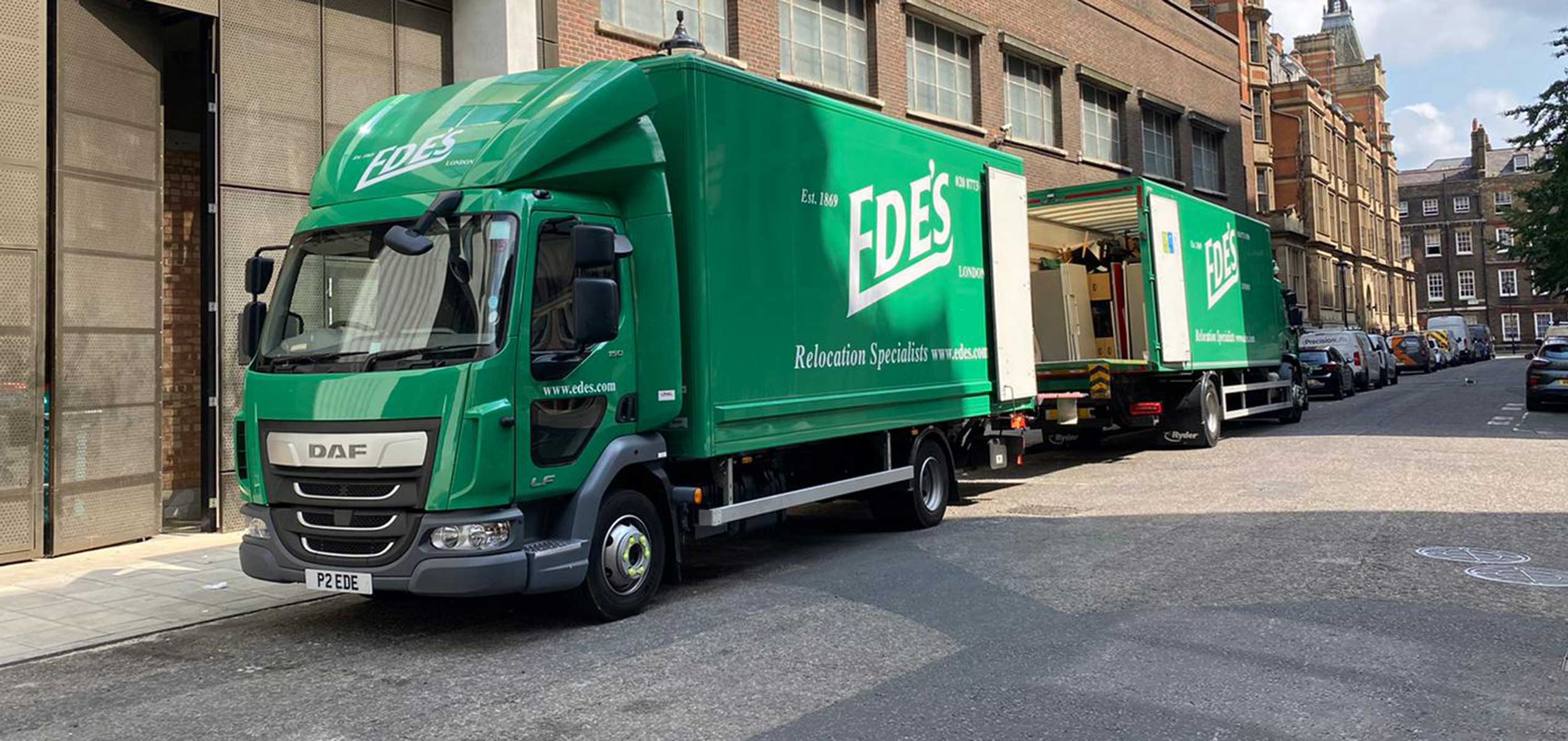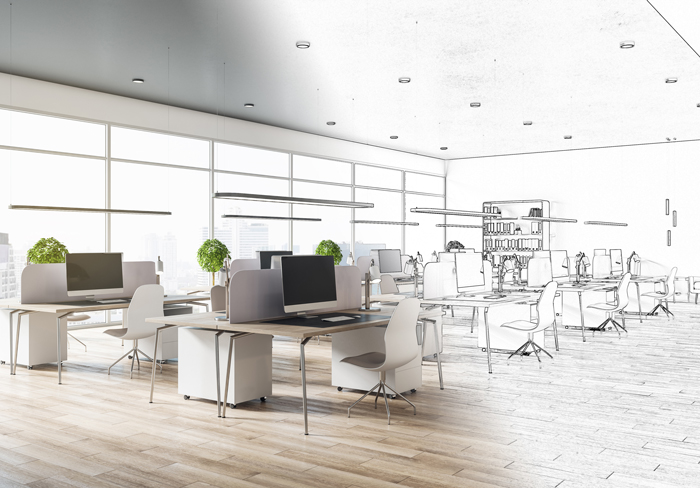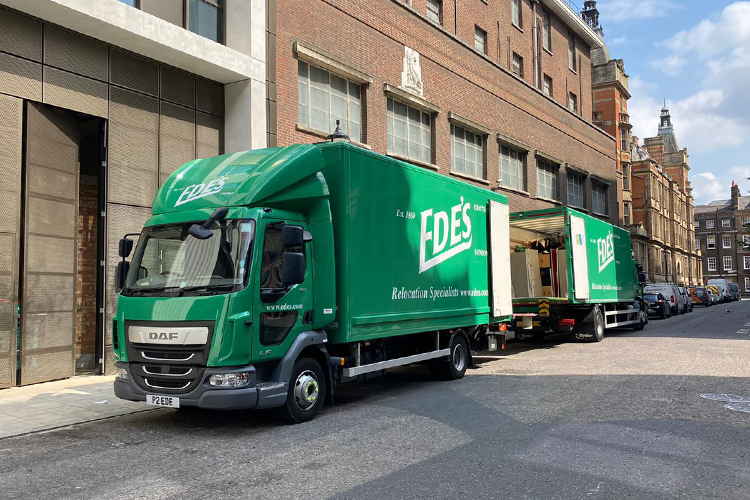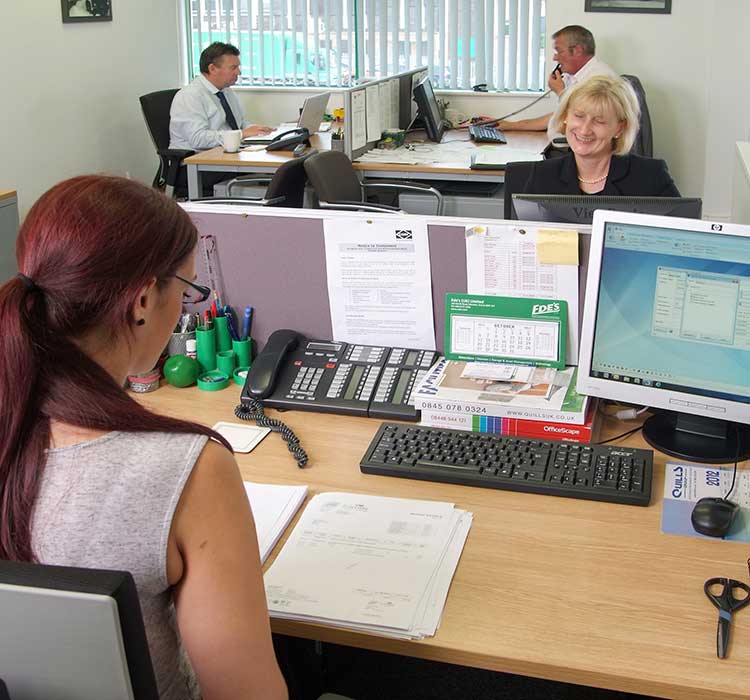Introduction:
In an era of economic uncertainty and a rapidly evolving business landscape, many companies face the challenge of downsizing their office spaces. This transition often comes with numerous complexities and may feel overwhelming to business owners and employees alike. As a trusted industry leader in commercial relocation, storage, and IT services, Ede’s is committed to supporting businesses through this process, offering expert insights, tailored services, and comprehensive support to ensure a seamless transition and minimal disruption to your business operations.
In this post, we will explore the essential strategies and tips to navigate the challenges of office downsizing effectively. We will discuss critical factors to consider, such as effective planning, space optimisation, IT infrastructure management, and employee communication. Whether it’s due to financial constraints, changes in business operations, or embracing remote work and hybrid models, downsizing your office space can offer opportunities for efficiency and streamlining while promoting a flexible, agile work environment. By implementing these strategies, you can ensure a successful transition that aligns with your business’s goals and objectives.
Join us as we delve into the intricacies of office downsizing, drawing from Ede’s 150 years of experience supporting businesses through complex relocation and transition processes. Equip yourself with the knowledge, tools, and expert guidance required to navigate this challenging period and embark on this journey toward a more efficient, streamlined, and cost-effective work environment. Our aim is to help you embrace this transition as a strategic opportunity for growth, improvement, and innovation, ensuring the continued success of your business in the face of ever-evolving market conditions.
Effective Planning and Prioritisation for Seamless Office Downsizing
The foundation of any successful office downsizing process lies in proper planning and strategic prioritisation:
1. Assess requirements: Thoroughly evaluate your business’s spatial needs and future growth projections, ensuring the new office space accommodates your team comfortably and aligns with your company’s goals.
2. Set realistic timelines: Establish a realistic timeline for your office downsizing, accounting for factors such as building renovations, furniture procurement, IT infrastructure setup and employee communication.
3. Engage the right team: Assemble a dedicated team to oversee the downsizing process, ensuring all stakeholders are involved, and assign clear responsibilities for efficient execution.
4. Develop a relocation plan: Work with a trusted partner like Ede’s to develop a comprehensive relocation plan that covers every aspect of your office downsizing, minimising disruption to your business operations.
Space Optimisation and Design Considerations for a Smaller Workspace
Optimising your new, smaller workspace is crucial for maintaining productivity levels and creating a comfortable, efficient work environment:
1. Adopt a flexible layout: Consider implementing an open-plan or activity-based working layout that supports employee collaboration, improves space utilisation and promotes productivity.
2. Declutter and organise: Prioritise decluttering and reorganising your office assets, ensuring you maintain only the essential items in your new workspace to maximise efficiency and minimise clutter.
3. Opt for multi-functional furniture: Choose smart, multi-functional furniture that serves various purposes, conserves space, and supports ergonomic principles to create a comfortable, efficient workspace.
4. Implement creative storage solutions: Implement innovative storage solutions such as vertical storage, under-desk cabinets, and shared storage areas to maximise space availability and reduce the overall footprint of your new office.
Managing IT Infrastructure and Technology Needs in a Downsized Space
Carefully managing your IT infrastructure and technology needs is key to maintaining operational efficiency in a downsized workspace:
1. Audit and assess IT needs: Conduct a thorough review of your existing IT infrastructure and identify which assets must be retained, upgraded, or disposed of as part of your office downsizing process.
2. Embrace cloud computing and remote work: Leverage cloud computing solutions and remote working capabilities to minimise hardware requirements, streamline IT operations and support a more agile work environment.
3. IT relocation strategy: Collaborate with experienced IT relocation service providers, such as Ede’s, to develop and execute a comprehensive IT relocation plan that ensures minimum disruption to your operations and seamless integration of your new workspace.
4. Implement robust data security measures: Ensure data security and privacy are maintained during your office downsizing process by implementing best practices and working with trusted partners to safeguard and manage sensitive materials and infrastructure.
Employee Communication and Support during the Downsizing Process
Effective employee communication and support are paramount when navigating a complex office downsizing process:
1. Transparent communication: Keep employees informed throughout the entire downsizing process, ensuring they understand the reasons for the change, the timeline, and the expected impact on their roles.
2. Offer support and guidance: Provide resources, guidance, and support to help your team through the transition period to ensure a smoother, more manageable experience for all involved.
3. Encourage open dialogue: Foster an environment of open communication, enabling employees to voice their concerns, suggestions, or questions and reassuring them of your company’s commitment to maintaining a positive and supportive work environment.
4. Keep employees engaged: Maintain team morale by involving employees in the planning and decision-making processes related to the office downsizing, allowing for their input on new workspace design, layouts, or interior elements that will impact their day-to-day work experience.
Conclusion
Navigating the challenges of office downsizing requires a strategic, well-executed approach that prioritises planning, communication, and efficiency at every turn. By implementing these proven strategies, your business can transition smoothly into a smaller workspace that aligns with its goals, promotes efficiency and provides a comfortable, productive environment for your team.
As an established industry leader in commercial relocation, storage, and IT services, Ede’s offers tailored support and comprehensive solutions for businesses undergoing office downsizing. Trust our expertise and unwavering commitment to excellence to assist you every step of the way, ensuring your office downsizing process is a successful, smooth, and strategic investment in your business’s future and continued growth. Contact us today for professional office move management services!

















